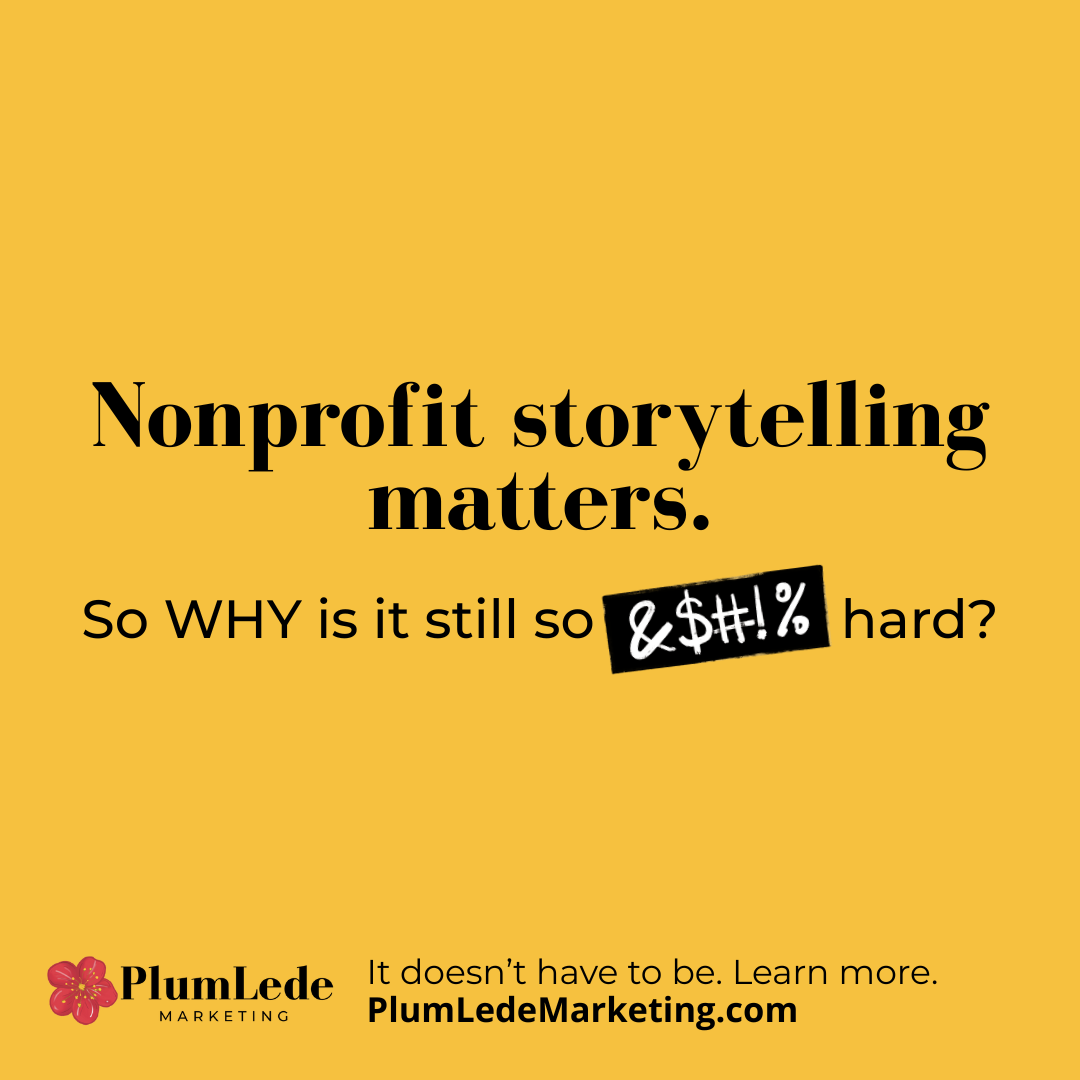Nonprofits: The Storytelling Struggle is Real
You already know storytelling matters. It connects your nonprofit’s mission to real people. It inspires donors, builds trust, moves hearts, and turns passive readers into passionate supporters.
So why is it still so stinkin’ hard?
If you’ve ever said, “We really need to collect more stories…” and then immediately sighed and closed your laptop, you’re not alone.
Here are five of the most common storytelling roadblocks nonprofits face, and real ways to navigate them.
1. “We Can’t Share Stories Because of Confidentiality”
Working with vulnerable populations makes storytelling feel risky, and for good reason. Your participants matter, and you work hard to protect them.
Try this:
Use composite stories or pseudonyms. Combine aspects of multiple individual stories or experiences into a single, synthesized narrative. Just be transparent about it in your delivery.
Let folks opt in with a simple, values-based story release form. You never know who’s willing to share their story unless they’re asked and know exactly how their story will be used.
Focus on the impact, not the identity. You can tell a powerful story without revealing identifiable details. When you spotlight the outcomes they’ve experienced, their story inspires long-term support, without oversharing.
Key reminder: Never assume someone isn’t willing to share. Ask, or offer easy, low-pressure ways for them to tell their story at their own comfort level.
2. “Our Team Doesn’t Have Time”
Everyone’s stretched thin. (WHEW.) Story collection feels like a wish whispered during a 2 a.m. mind spin.
Try this:
Add a “Got a story?” prompt to your exit surveys or staff debriefs.
Hold a 15-minute monthly “Story Share” huddle where staff shout out special moments.
Create a Google Form where staff or clients can drop quotes or anecdotes in real-time, even from their phones.
Key reminder: You’re not building a documentary. You’re collecting snapshots. A gallery of snapshots paints a powerful picture.
3. “We Don’t Have a Place to Store Stories”
Even when someone captures a great quote or moment, it disappears forever in someone’s inbox.
Try this:
Create a simple, shared Story Bank. (Download this FREE Google Sheet PlumLede template to get started.) Pin it in your staff Slack, bookmark it in your browser, and link it in meeting agendas like it’s gold.
Include fields like: name or pseudonym, program, quote, consent status, and whether a photo is available.
Add tags like “resilience,” “first-time donor,” or “STEM” to help you repurpose later
Calendar 15 minutes each week to keep it updated.
Key reminder: You don’t need fancy software. You just need consistency.
4. “We Don’t Know How to Use Them”
So you got a great quote... now what?
Try this:
Pair short quotes with social graphics.
Use medium-length stories in donor thank-you emails or newsletters.
Save deeper profiles for blog posts or annual reports.
Recycle! A powerful story can live five lives across different community-facing materials.
Key reminder: A story doesn’t have to be long to be effective. It just needs shared.
5. “We’re Afraid of Getting It Wrong”
Worries about tokenization or trauma storytelling can make even well-meaning orgs freeze up.
Try this instead:
Give clients an out. Let them know you’ll respect a no. And if they say yes today and change their mind later, that’s okay too. Follow their lead.
Let participants shape and share their story in the ways they want. If they prefer video, text, audio, drawing or poetry, great. Their comfort is a priority.
Focus on dignity, growth, and agency over drama.
Instead of, “She was broken. We stepped in to save her,” say, “Her strength guided her journey, and we were honored to walk alongside her.”
Instead of, “ He was at rock bottom,” say, “He was looking for a fresh start. Through our program, he discovered new tools and began building the life he wanted.”
Train your team on values-based storytelling. Respect cultural perspectives. Avoid stereotypes or savior narratives. Use respectful, inclusive language and check for bias. Make it part of your next at your diversity, equity & inclusion staff conversations.
Key reminder: You don’t have to be perfect, but be thoughtful.
Storytelling isn’t about perfection. It’s about connection. With a few simple shifts, your team can collect and share stories in ethical, sustainable, and actually doable ways. Start small. Start simple. Start with the next powerful moment someone shares in the hallway, and write it down.
Your mission is already changing lives. Now it’s time to let the world feel it.
Need a little guidance developing your story collection process? Reach out. Let’s brainstorm together.

